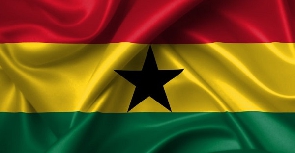- Home - Entertainment
- Lifestyle News
- Entertainment Videos | TV
- Year In Review
- Music News
- Entertainers
- Entertainment Archive
- Entertainment Photos
- Jokes
- Entertainment Headlines
- Ameyaw Debrah
- Brown GH
- Celebrities Buzz
- GH Base
- Ghana Celebrities
- Gh Gossip
- GH Page
- GH Splash
- Hot Gossip GH
- YEN

Entertainment of Friday, 23 January 2004
Source: GNA
Bono Manso is determined to protect relics of slave trade
Bono Manso (B/A), Jan. 23, GNA - The chiefs and people of Bono Manso in the Nkoranza District of Brong Ahafo are determined to protect the relics of the obnoxious slave trade in the area.
A grand durbar held in the town last week by the chiefs and people in celebration of the 75th birthday anniversary of the late African American Civil Rights leader, Dr Martin Luther King Jnr. was a vivid expression of their desire to place the town, capital of the ancient Bono Kingdom and a slave marketplace on the world tourism map. No doubt the excitement and furore that characterized the celebration was ample testimony of their determination to rake into the past for development.
The Centre for Savanna Art and Civilization, an NGO, sponsored the ceremony, which was in recognition of the yeoman's role played by the late American in the campaign against discrimination and inhuman treatment of blacks.
Okatakyie Agyeman Kudom 1V, Omanhene of Nkoranza traditional Area, presided over the function, which was under the theme, "Upholding African Values, Role of Traditional Rulers". In his welcoming address, the Omanhene noted that "as a Baptist church pastor, he (King) fought for the total emancipation of the Black race from suppression, oppression, poverty, ignorance, lack of self esteem and illiteracy".
He called on Africans in the Diaspora to recognize the efforts of the late Civil Rights leader and come back "home" to support development efforts.
The chiefs and people of Bono Manso are not leaving any stone unturned to turn their misfortune of their town being a market place for slaves into a golden pot of tourism attraction. Nana Asante Nyarko, Kaneasehene of the town, told the Ghana News Agency that a tourist centre was being prepared for the purpose and that all relics of the obnoxious trade as well as its historical status as the capital of the ancient Bono Kingdom had been identified and were being protected.
He explained that slaves captured in the northern parts of the country were transported to the town (Dwabirem), where the strong ones among them were selected and transported to the coast, whilst the weak ones were left behind in the town.
Could this be the cause of our inability to advance meaningfully in development? he asked.
The "Dwabirem" exists in the area and other relics include a vessel, known as "Ayaadaso", which according to Nana Asante was used to bring down the rains during the dry season and "Sebira", a stone that was used collaboratively with the vessel.
The town has links with Assin Manso in the Central region, where the slaves had their "last bath" before they were sent into the castles at the coast for their journey into slavery.
Nana Asante said in their determination to uphold and develop the area as a tourist centre, the chiefs and people, with the support of the NGO and the Nkoranza District Assembly, had set up an office with pictures of such tourist attractions.
"We need sponsorship to fully establish the centre and to upgrade the tourist relics", he added and appealed for assistance.










